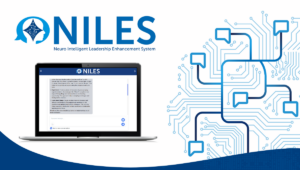
Smarter Leaders Start with Smarter AI
Meet NILES, the world’s first AI coach designed exclusively for leaders.
Thank you for searching the NeuroLeadership Institute archives. Here’s what we were able to find for you.
Still having difficulty finding what you’re looking for? Contact us.

Meet NILES, the world’s first AI coach designed exclusively for leaders.

Growth mindset, psychological safety, and accountability must work together for effective leadership.
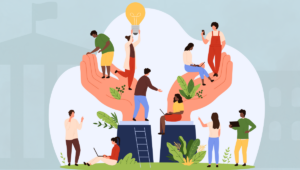
Providing clarity and offsetting negative feelings are essential for helping frazzled employees regain composure.
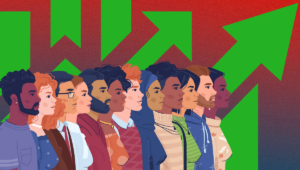
Here’s how organizations can advance diversity and inclusion (D&I) initiatives amid multifaceted attacks.

In today’s complex, interconnected world, inclusive leadership isn’t just a moral imperative — it’s a strategic advantage.
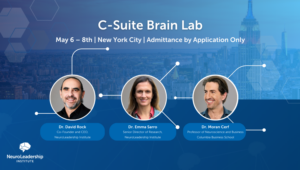
At our May 2025 event, leaders will become the test subjects to start embedding crucial habits.

A recent article in the NeuroLeadership Journal discusses the need for organizational accountability and the benefits of shifting from a punitive to a proactive approach.
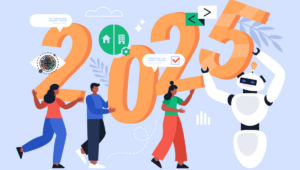
In a rapidly changing business world, these issues are likely to become prominent for leaders.
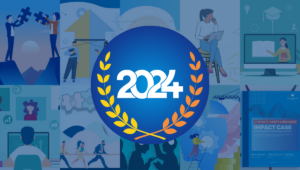
This year, leaders were especially interested in learning about accountability and staying adaptable through change.

In 2024, AI continued to transform the workplace. Our favorite AI blog articles this year described how leaders can use AI to make their organizations more human.

Brain science can help organizations make the most of their investment in current and future leaders.

Here’s a small sampling of insights from more than 20 virtual sessions.

Here’s a small sampling of insights from more than 20 virtual sessions.
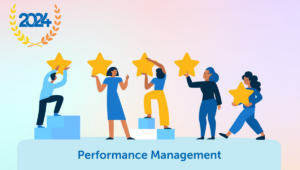
Managing performance in a hybrid working world is no easy feat. Fortunately, brain science can demystify the process.

Post-pandemic, the healthcare industry has had to adapt in major ways to sustain leaders and employees.

Accountability became a major topic in 2024. Here’s how leaders can build a healthy, high-performing culture.

Everyone in an organization should have the freedom to speak up. Science shows us how to do it well.

Here’s how leaders can help create an environment of shared accountability in their organizations.
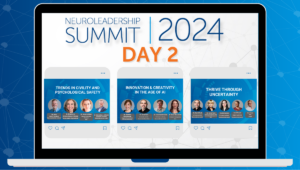
The second day of the 2024 NeuroLeadership Summit featured discussions about AI, civility, burnout, and much more.
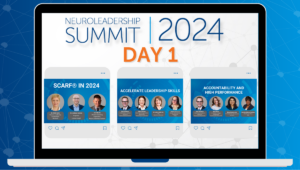
Day 1 of the 2024 NeuroLeadership Summit provided valuable insights to help leaders thrive through change.
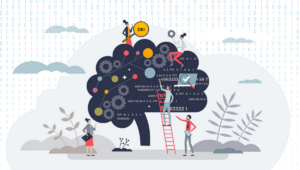
Here’s why the tech industry’s DEI efforts are falling short and what HR leaders can do to build a truly inclusive workforce.

AI can improve the quality of your thinking — but only if you know how to ask the right questions.

NLI’s chatbot can give science-based leadership advice, brainstorm ideas, and more.

AI can open doors toward creative thinking, but it’s not yet a match for human imagination.

If you want your feedback to make a difference, focus on reducing feelings of threat.

Leaders everywhere are thinking about artificial intelligence, leadership development, and building cultures of high performance.

Don’t let these misconceptions stand in the way of building a strong, healthy leadership pipeline.

Add these episodes to your playlist for the best brain-friendly advice for today’s leadership challenges.

Hybrid work has changed the workplace dramatically — and performance management must change with it.
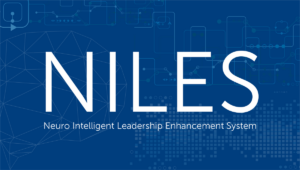
NLI’s Neuro Intelligent Leadership Enhancement System (NILES) is poised to transform how leaders perform and excel at their jobs.
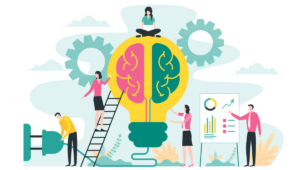
Most training programs don’t help leaders develop the skills and habits needed to face today’s challenges — because they don’t follow the science of habit activation.
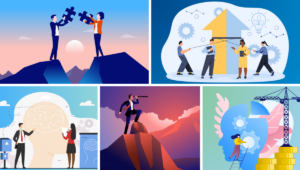
These five topics resonated most with our readers in the first half of the year.

Effective leadership requires thinking ahead, owning commitments, and anchoring on solutions.

The concepts of growth mindset, psychological safety, and accountability define an effective new type of leadership.

Most culture change initiatives fall apart because nobody attends to the key factors that determine their success.

In today’s changing world of work, it’s more important than ever to know how to give and receive feedback.
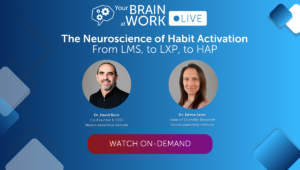
Join Dr. David Rock and Dr. Emma Sarro to explore the transformation of organizational learning solutions over time – and recent breakthroughs that are transforming learning efficacy as we know it.
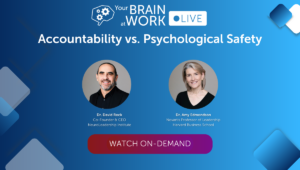
Join Dr. Amy Edmondson (Novartis Professor of Leadership, Harvard Business School) and Dr. David Rock (CEO and Co-Founder, NLI) in the last of our 3-part series. They’ll lead the NLI community in an exploration of how psych safety has the power to boost accountability and engagement, thereby driving sustainable business results over time.

The CDO-CHRO alliance is a force to be reckoned with. The SHIELD model shifts the conversation from a technical concern to a core business and ethical imperative.

Organizations should think about their habits and reward systems to help women leaders thrive.
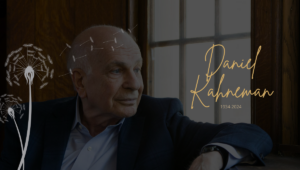
Nobel Prize-winning psychologist’s research on decision-making influenced The SEEDS Model®.

Psychological safety and accountability are often thought to be in conflict, but in reality, they’re both essential components of high-performing teams.

Understanding neuroscience can help leaders be more effective at the individual, team, and organizational levels.

In the pursuit of results, leaders don’t have to choose between kid gloves or command-and-control.
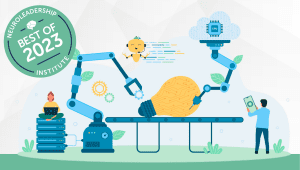
These best articles from 2023 explore how humans can find ways to work alongside AI rather than fear it.

The five biggest leadership trends for 2024, according to NLI founder and CEO David Rock.

Create a more engaged, resilient workforce by approaching challenges with careful communication, a growth mindset, and empathy.

Explore key insights and coverage from the 2023 NeuroLeadership Summit in our comprehensive write-up. On-demand recordings available now.

Sending employees positive social signals makes them feel valued, engaged, and inspired.

Most business communications are long-winded, unclear, and ineffective — but they don’t have to be. Here’s how to make them better.
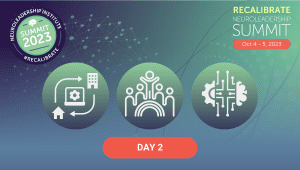
Day 2 of the 2023 NeuroLeadership Summit featured conversations around the future of AI, neurodiversity, the need for reskilling, and more.
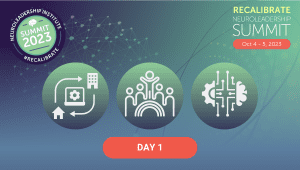
Day 1 of the 2023 NeuroLeadership Summit left attendees with a wealth of ideas to recalibrate on topics ranging from DEI to performance management to burnout.

Anyone can become a toxic leader without even realizing it. Here’s how to recognize the warning signs so you can change.

Employees are often reluctant to give their managers honest feedback. Here’s why, and what to do about it.

Contrary to popular belief, AI might soon become a better leader than humans. We need to plan for that future now.

This new approach aims to maximize a low dosage of mandatory in-office time while giving everyone a sense of control and feelings of fairness.

What leaders should consider when sensitive social issues arise.

The way our brains evolve challenges our ability to excel in a leadership role.

Transparency can’t avert every crisis, but it can shed light on the path ahead.

Managers who disconnect after work are rated as better leaders.

Corporate jargon is annoying, exclusive, and confusing — so why do we keep using it?

Employers can play a pivotal role in supporting gender diversity and ensuring everyone feels valued and included. Here are some steps to consider.

In a society obsessed with transparency, leaders are encouraged to reveal their innermost thoughts and feelings. But is there such a thing as too much sharing?

You may have promised to keep a secret, but research reveals why holding onto it is sometimes harder than it seems.

With a leadership gap looming, organizations need to challenge assumptions about what makes a good leader.

Disagreements happen, but with the right approach, leaders can diffuse the tension and find productive solutions.

By tapping into your heightened awareness of others’ emotional states, you can learn what your employees need and guide them effectively.
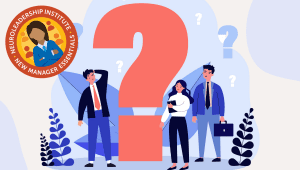
Becoming a manager means changing your mindset and approach. Here are five tips for navigating the change.

Leaders can benefit from being more empathetic and facing the individuals impacted by their decisions. Here’s how.

Leaders today face a deluge of demanding tasks and a mounting confidence crisis. Here’s how to regain courage and conviction.

If there’s one thing a multigenerational workforce has in common, it’s the importance of perks — and the potential harm from stripping them from the workplace.

Ted Lasso exemplifies a new, more empathetic, more collaborative kind of leader. Here’s what we can learn from him.

Five generations in the workplace provides plenty of opportunity for friction — and innovation.

Growth mindset allows for a continuum of personal growth and development that allows an individual autonomy over their own personal growth.

Organizations can reverse passivity among employees by offering more autonomy.

Grief at work is an opportunity for companies to demonstrate compassion and empathy.

As we look to 2023, we outline four leadership trends to keep your pulse on.

Although many organizations are striving to create a psychologically safe workplace, it can be hard to picture what that actually looks like. Here are three examples.

Our best advice from 2022 on how leaders can create a more empathetic workplace while still accomplishing big-picture goals.

By embracing a growth mindset, teams can absorb and act on feedback rather than dreading it and avoiding opportunities out of fear of failure.

One way leaders can foster a growth mindset is by rewarding improvement over time.

Nearly a decade ago, the NeuroLeadership Institute published an influential article titled “Kill Your Performance Ratings.” Here’s an update on what we’ve learned since.

Quality connections are key for building an empathetic workplace.

Anyone can develop mindfulness by focusing on direct sensory experiences — instead of thinking about the past, future, other people, or themselves.

Leadership naturally confers high social status — which can make workplace interactions threatening. A guide for leaders on how to manage status at work.

Organizations seeking to support their workforces should start with listening. It won’t erase inequity, but it can help us define what changes are needed.

With many employees about to have their worst day ever, here’s the brain-friendly way to do layoffs.

Taking inclusion beyond lip service requires constant, dynamic efforts at improvement.

Power doesn’t have to corrupt leaders. Here’s how to keep thinking about people first.

Despite looking good on paper, the 3-2 model threatens an employee’s sense of autonomy and could harm productivity.

Strategies leaders can take to prevent moral injury from having a lasting, negative effect on their organization.
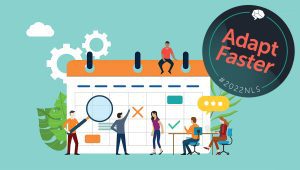
Leaders can spend a slew of time and money on organizational change initiatives. But many of them often fail. Here’s why and how to get them right.

There are many benefits to giving workers more autonomy. But you must plan carefully, or things can backfire.
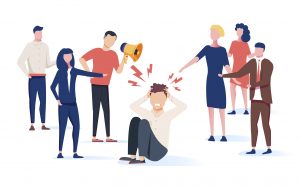
It’s not your imagination that rudeness is rising in the workplace. Here’s how to tackle incivility and get to a more polite and productive state.

Some anniversaries are harder than others. Here are three tools managers can use to put focus where it matters.
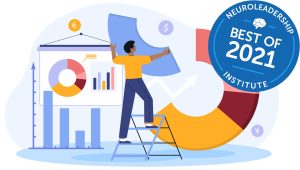
Have a look at some of our most popular content this year in performance management.

One soft skill has a place on the battlefield, the boardroom, the breakroom, and the Zoom room. Immerse yourself in stories that illustrate the benefits of compassion in any setting.

A landing place for some of the big themes around work as of late 2021.

NLI has worked for years to develop “sticky” acronyms to help people understand the brain science behind performance, learning, motivation, feedback, and dealing with bias. Here’s a brief summation of that work.

We talk often about the logistics of returning employees to offices, which is no doubt important. But what do managers need to do in order to manage the EMOTIONS of the moment?

If you allow your employees the space to be autonomous and drive some of their own decisions and approaches to work, it doesn’t so much matter where they’re physically sitting to do that work.

Despite widespread and increasing reports of job burnout in the past year, the concept of burnout is often misunderstood or overlooked—to the detriment of both individuals and organizations. Dr. Kamila Sip, the Senior Director of Neuroscience Research at the Neuroleadership Institute, recently joined the HR Works Podcast to explore the concept through the lens of neuroscience. In the episode, she explores the causes of job burnout, sheds light on common misconceptions about burnout, and shares how organizations can prevent and alleviate job burnout. Kamila explains that while the concept of job burnout is not new—it was declared an occupational phenomenon by the World Health Organization back in 2019— for many, the experience of burnout was amplified and intensified by the massive amount of uncertainty we experienced in 2020. When the pandemic struck, and people moved from desks and offices to kitchen counters and converted bedrooms, many lost a sense of security in their jobs, their finances, and their health. As month rolled into month, and the pandemic did not recede, neither did the stress. In other words, we went from feeling stressed sometimes to feeling stressed all of the time. While the psychological toll of the pandemic is a huge contributor to stress and anxiety, it also magnified the workplace challenges in ways that exposed the causes of job burnout that are distinct from being generally overworked or stretched too thin. This is because the real causes of job burnout are more rooted in organizational culture and expectations than in the individuals’ ability to manage the stress of life. Kamila explains that job burnout, like all stress phenomena, affects how we make decisions, how we regulate our emotions, and how we interact with others (all critically important to work). She also unpacks the role and importance of having our psychological needs met, and how by meeting those needs, organizations can reduce job burnout and increase a healthy performance, even in the face of a crisis. To learn more about burnout and what organizations can do to prevent it, listen to the full episode of the HR Works Podcast here.

People started talking about “moonshots” back in 1949. Back then, the phrase quite literally meant to shoot for the moon—with a spacecraft, that is (eg. the Apollo missions). Since then, the term has become shorthand for an audacious vision paired with an ambitious goal. This type of thinking in the organizational context, popularized by pioneering organizations like Microsoft, Apple, Google and SpaceX, has driven innovation for decades and been the source of countless technological breakthroughs. So it has us thinking: What’s the moonshot for leadership? What do the effective leaders of the future look like? And how do we help today’s leaders get there? In his latest article on Forbes, Dr. David Rock, Co-founder and CEO of the NeuroLeadership Institute, reflects on those questions. David explores the key insights that leaders should embrace and act upon right now to set themselves up for success in the future. Throughout, he explains how science should inform and transform how we think about leadership. Some of the insights David unpacks include: How to leverage the moment to do big things Why leaders should care about humans at levels you never imagined How to embrace hybrid work and autonomy And why leaders should follow the science, experiment, and follow the data To read the full article click here, or to learn more about NLI’s approach to leadership click here.

Stress can be thought of simply as heightened attention to the negative. Using a growth mindset can help with reducing stress in the moment.

What can you count on coming your way in 2021? More ambiguity, uncertainty and change! Hooray! As a leader, your challenge is to increase your capacity in the face of it all, because traditional approaches to leadership development aren’t keeping pace with the kinds of complexity we now face. Currently, fewer than 18% of leaders have the qualities of mind to optimally lead in volatile, uncertain, complex and ambiguous (VUCA) environments (Hall & Rowland, 2016). Fortunately, many bright people have been working on this very agenda over the past decade or so. What are they cooking up for us for 2021?

Experts say that times of great change should be seen as opportunities to help organizations form new habits.

Change can be scary and tiring, but it also represents an amazing (and fleeting) opportunity to build a better world of work. Here’s how.

Unlocking the power of a diverse organization requires creating a sense of inclusion. These three action-oriented ideas can help offer a roadmap.

In a world that seems divided over any topic you can think of, a bit of laughter can bridge even the widest gaps. You already knew that intuitively; now learn some of the science to validate it.

We’re not out of the woods yet, and won’t be for a while. So how do we thrive amidst all this? Research suggests there are two things to focus on.

High levels of stress and anxiety can affect your ability to focus. Science shows us how can you manage stress, maintain focus, and stay productive.

This crisis’ effects are physical and psychological. Here are the everyday psychological habits to keep your mind healthy and stay productive.

IBM, Procter & Gamble, and Netflix reacted quickly to crisis. In doing so they showed that successful organizations put humans first for good reason.

Employees who are empowered to speak up and offer feedback to their superiors are more likely to offer ideas on how to improve the business.

Recently, our social media feeds have been plastered with companies announcing their support of the Black Lives Matter movement and other racial justice initiatives. Some of those announcements, from companies like Nike and Ben & Jerry’s, have been hailed widely. Others have been met with sharp criticism. What differentiates the two groups is a historic catalog of action and commitment from one group—and an assumed “here one day, gone the next” mentality from the other. “The intent of the messages is appropriate, and yet it needs to be backed up with action, commitment, and sustainability. It’s like a friend who only sends you a message once a year on your birthday; are they really a friend?” said Khalil Smith, NLI’s Vice President of Consulting and Practices, in a recent interview. Because Nike and Ben & Jerry’s have consistently advocated for the cause of racial justice, their statements align with what we know about their brands, and ring true when received by the public at large. Contrast that to companies who are entering the conversation for the first time. As Khalil explains, “If the only time you’re talking about race or equity is when something horrific breaks through the news cycle and you’re sending out a message at the same time as everyone else, that’s when it seems disingenuous.” Now it’s time for companies to back up their commitments with real, sustained action. They need to go beyond just wading into the conversation, and do the work of implementing solutions. They need to be the type of friend who does more than just wish you a happy birthday. To read the full interview with Khalil, click here. [action hash= “828b54ca-f297-476c-82f1-7ac98cbba097”]

Recently, many organizations have had to make major changes to their operations overnight. Here’s a strategy to sustain the energy of this moment.

Coronavirus poses an extraordinary threat to our sense of control. The solution is to give employees autonomy wherever possible.

We’re all trying to keep up with big changes. Here’s how Morningstar’s approach to crisis management is keeping its workforce engaged, happy, and healthy.

It feels like we’ve weathered an enormous storm in recent weeks. Seemingly without warning, forces beyond our control displaced us from our offices and cut us off from our colleagues, friends, and families. Now we find ourselves in an unfamiliar landscape, stripped of its familiar guideposts and riddled with new obstacles. With no clear vision of the road ahead, many organizations have had to forge their own paths. Continue Reading on Forbes

If you haven’t already seen the letter from CEO Brian Chesky to his team at Airbnb, addressing the impending layoffs, you likely will very soon. It’s already starting to be shared broadly, and based on my time studying and working with businesses, I would forecast that it will become either a bar for how layoffs are measured in the time of COVID-19, or, more hopefully, a blueprint. Continue Reading on Forbes

When global companies centralize their global HR function, members of the HR team are asked to improve employee experience, rather than improve processes.

Science tells us that people need simple, easy-to-use tools to think and work effectively. Here’s how that science can guide behavior change at your organization.

Consider a different perspective on current events: By “befriending the naysayer,” we can better navigate the pandemic, personally and professionally.

High levels of stress and anxiety can affect your ability to focus. Science shows us how you can manage the threat, maintain focus, and stay productive.

Toxic cultures don’t stem from a lack of ping pong tables or free snacks. They stem from a poor set of priorities, habits, and systems.

At the 2019 NeuroLeadership Summit, we caught up with psychologist Dr. Valerie Purdie Greenaway to discuss what it looks like to scale social learning.
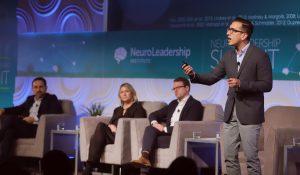
To create a culture of empathy, leaders should recognize that empathy isnt a single trait. Its a suite of skills to practice over time.
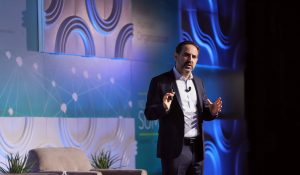
The opening session of the 2019 NeuroLeadership Summit focuses on the human: how to recognize the need for humanity and building cultures that value humans.

Arianna Huffington, Founder and CEO of Thrive Global, explains on the Your Brain at Work podcast what “thrive time” is all about.

Lynda Gratton, Professor of Management at the London School of Business, says everyone should ask themselves two questions related to the work they do.

More than 200 CEOs have agreed to put societal values ahead of profits. Here’s why brain science says this is a move in the right direction.

By using growth mindset, we can give performance reviews that are more accurate, less threatening, and support our team members to develop and succeed.

A keynote session at this year’s NeuroLeadership Summit explores the social domains that can either motivate us to perform or cause us to recede in threat.

Research has shown that leaders can improve multiple aspects of performance management by helping their teams to build a growth mindset.

Growth mindset is instrumental for creating the right performance management, as it builds resilience in people and helps them embrace challenges.

Reframing a common question around transformation may help leaders reduce the sense of threat often provoked by major change.

Here’s how leaders create an environment in which both extroverts and introverts feel comfortable sharing their ideas in meetings.

With a continued focus on growth and key leadership principles, HP has managed to dominate its market and see huge gains in engagement.

Exhaustive lists of leadership principles burden the brain, making them hard to remember and nearly impossible to weave into the larger culture.

A focus on growth mindset and building unity through conversations and bias mitigation have helped Nokia create lasting culture change.

Establishing the right priorities are important to create long-lasting change, but leaders also need to implement the right habits and systems.

A shift in mindset — from a fixed mindset to a growth mindset — is the first step leaders need to take in their organization to help kickstart culture change.

Changing a culture can feel like just about the toughest job a leader has. It’s hard enough getting yourself to act differently — how could you possibly change the behavior of hundreds or thousands of people? From both our research and extensive client work, helping companies like Microsoft and HP transform their cultures, the NeuroLeadership Institute is confident that all leaders are capable of effecting great change. The key is to follow the science — to know how to shift people’s mindsets to adopt new habits for the long haul. Our latest white paper, “The NLI Guide: How Culture Change Really Happens,” delves into just that topic. The report provides a two-step process that begins with building a growth mindset — that is, the pursuit of always improving, not proving, yourself — and following NLI’s method of Priorities, Habits, and Systems to cement culture change. Every Thursday for the next seven weeks, we’ll be publishing insights from the white paper on this blog, as part of our latest Master Class series. (Catch the last Master Class series, on growth mindset, here.) Table of Contents Week 2: The First Step Toward Culture Change Is a Shift in Mindset Week 3: Leaders Need More Than Buy-In to Create Culture Change Week 4: CASE STUDY: Nokia Turns Two Cultures into One Week 5: How Microsoft Changed Its Culture by Going Simple Week 6: CASE STUDY: HP Embraces Growth Mindset and Kickstarts Culture Change Together, the posts will serve as a handy reference guide for the essential science (and implementation) of culture change. The conventional wisdom around transformation is flawed. It assumes awareness of the challenge or goal is enough. But once you’ve gotten buy-in, then what? NLI’s approach to culture change helps organizations answer that question, so they can make a lasting, scalable impact — and they can do it weeks, not years. [action hash=”1c967ecd-f614-4b3d-a6f1-a14c6ec523bc”]

Leaders typically think of growth mindset in terms of performance, personal growth, career development, and skills improvement. But the concept also can be crucial to driving diversity and inclusion efforts. The key: Whether you believe you are capable of improvement often determines whether you think other people are capable of change. That, in turn, shapes how you view your team as a whole. At the NeuroLeadership Institute, we define growth mindset as the dual belief that skills can be improved over time, and that improving those skills is the goal of the work people do. We recently explored this concept in a white paper featuring growth-mindset case studies from five leading global organizations. What science says Research has found a number of benefits to building a growth mindset culture, specifically around inclusion. For instance, growth mindset can reduce stereotyping. Researchers have found that whether or not you think people are fixed or mutable in who they are shapes how many stereotypical judgments people make. If you use a growth mindset, you are more likely to attribute stereotype traits to environmental forces, rather than inborn traits. When making judgments, a growth mindset also helps people gather more information before coming to conclusions. In one study, those with a fixed mindset needed less context before making a decision, potentially leading to undesired or unforeseen outcomes. Growth mindset doesn’t just help people doing the stereotyping; it also helps people on the receiving end. Consider the idea of “stereotype threat.” It’s when members of a certain group do poorly on a task because they’re told they’re not “supposed” to excel. A body of research has shown that growth mindset can reduce the effects of stereotype threat, enabling people to perform closer to their true potential. The business case For organizations, the implication here is that cultivating a growth mindset culture can help drive down biased behavior and create stronger teams. Leaders who help their employees see failures as learning opportunities, and threats as new and exciting challenges, can also help those employees see others’ shortcomings not as signs of personal failings, but merely as a product of being human. When employees start accepting diverse team members as generally well-intentioned, though perhaps fallible, they can move from a culture of competition to one of true and inclusive collaboration. This article is the twelfth and final installment in NLI’s series, Growth Mindset: The Master Class, a 12-week campaign to help leaders see how the world’s largest organizations are putting growth mindset to use. [action hash=”cd97f93c-1daf-4547-8f7c-44b6f2a77b77″]

Across all of our industry research into growth mindset, one question keeps popping up for leaders: If we’re so focused on growth, can we still focus on results? We’ve heard the concern voiced in a number of different ways in discussions with organizations putting growth mindset to use, which we’ve featured in our latest white paper, “Impact Report: Growth Mindset Supports Organizations Through Disruption.” The paper showcases how firms make growth mindset come to life and drive lasting change. In short, the answer is yes. How to measure progress and results We define growth mindset as the belief that skills can be improved with persistent effort; they are not set in stone, or fixed. A Growth Mindset Culture is one where most, if not all, employees demonstrate that attitude in their shared everyday habits. They embrace failure. They take risks. They learn to get better. Fortunately, growth mindset makes room for an emphasis on learning and checking progress over time, because it’s not about comparing two different employees or teams to one another; it’s about comparing one employee or team to themselves. One way to do all that and still ensure you’re moving in the right direction is to perform a bit of mental contrasting. The technique involves holding in your mind’s eye the memories of the past or the vision of the desired future, and contrasting them with the present reality. When leaders contrast where they are to where they were, or where they’d like to go, they can evaluate the fruits of their growth mindset. They can ask themselves questions such as, How much have we grown? Are we growing in the right ways? What else still needs attention? In fact, it’s crucial that leaders encourage their teams to focus on results and learnings, since growth requires two endpoints. A team may never hit certain ideals, but by measuring achievement against specific objectives, leaders can know the growth mindset is working. In other words, growth mindset isn’t important just for its own sake. At some point, everyone still needs to stop and see how far they’ve come. This article is the tenth installment in NLI’s series, Growth Mindset: The Master Class, a 12-week campaign to help leaders see how the world’s largest organizations are putting growth mindset to use. [action hash=”cd97f93c-1daf-4547-8f7c-44b6f2a77b77″]

Leaders are constantly wondering how to create or strengthen their culture. So as part of its ongoing NLI Guide series, the NeuroLeadership Institute has released its latest white paper, “How Culture Change Really Happens.” In simple, everyday language, the guide makes a compelling case that leaders should be pursuing two lower-level objectives in order to produce — and sustain — culture change. Without both elements, teams may start working more efficiently, but the behavior is bound to subside. NLI’s approach to culture change starts with growth mindset. Leaders must help their employees understand that mistakes happen, and that failure is inevitable. What matters is whether people see those setbacks as reasons to give up, or to persist. Once people start embracing challenges as opportunities, rather than as threats, NLI believes the next step is PHS: priorities, habits, and systems. Leaders often make the mistake of thinking awareness of a goal is enough motivation to achieve it. But willpower is fleeting, so it’s important to create the habits that support a change, and the systems that reinforce those habits. We define culture as shared everyday habits. With a growth mindset and a focus on priorities, habits, and systems, leaders should have no trouble building the desired shared everyday habits in their own organization. [action hash=”1c967ecd-f614-4b3d-a6f1-a14c6ec523bc”]
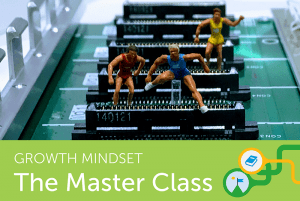
By now, most leaders understand that organizational growth mindset is a transformative tool for talent development. The belief that others can develop their abilities — and the ability to help them do so — are powerful ways to help employees become more resilient, more nimble, and more innovative. But actually putting all that into practice within an organization is more difficult than it sounds. As we recently learned in our industry research project — an endeavor we captured in a new white paper, “Growth Mindset Culture” — leaders are finding that two main obstacles keep getting in the way. Here’s what they’re about and how to address them. Obstacle #1: An imperfect understanding of growth mindset When it comes to cultivating growth mindset within an organization, it’s not enough for leaders to simply tell employees to have a growth mindset. Nor should leaders simply declare that they themselves have a growth mindset when the reality is that many leaders don’t fully understand it. For leaders to really embody growth mindset, they need to ask themselves: Do they truly believe in their own need to grow, and not just that of their employees? The best way to promote growth mindset throughout an organization, we’ve found, is for leaders to embody growth mindset themselves. Our research showed that leadership buy-in was critical for the success of growth-mindset initiatives. To assess their own understanding, leaders should ask themselves three questions: Do I believe that everyone in their organization has the capacity to grow? Do I believe there’s talent everywhere in the organization — talent that should be fostered and acknowledged as it emerges? Am I open about my own mistakes, and the lessons I draw from those mistakes? Only when leaders understand these principles fully, deeply, and accurately can they truly serve as models of growth mindset for their employees. Obstacle #2: Policies that don’t reflect a true commitment to growth Once leaders begin to master the principles of growth mindset, they can turn their attention to disseminating it throughout the organization. But fostering a culture of growth mindset requires more than just sending out a few emails or running a training workshop. It also means revising practices, policies, and systems throughout the organization to make sure they value not just performance, but learning, growth, and progress over time. Unfortunately, many organizations that claim to value growth mindset treat their employees in a way that doesn’t value their growth — for instance, firing an employee who makes a mistake rather than treating it as an opportunity to learn and grow. When this happens, it signals that the organization may be overvaluing performance relative to growth. The key to creating a supportive environment is communication. Employees and managers should speak frequently in a constructive evaluation process. They should discuss what they’re really happy with, what can still be improved, and how to collaborate on getting there. Ultimately, organizations that truly care about employees’ growth and development know that making mistakes is inevitable — and they foster an environment where mistakes are seen not as indictments of worth or ability, but as opportunities for growth and improvement. This article is the ninth installment in NLI’s new series, Growth Mindset: The Master Class, a 12-week campaign to help leaders see how the world’s largest organizations are putting growth mindset to use.

The key to addressing toxic behavior might be the third person in the room. A new study of more than 6,000 college students suggests a major way to reduce toxic behavior is through bystander training — that is, equipping people who witness instances of assault, or possible warning signs, to quickly intervene. People who underwent training intended to act and actually did more much often than those who weren’t trained. The finding bolsters what the NeuroLeadership Institute has found with respect to “employee voice,” or the extent to which employees feel empowered to make constructive, challenging upward communication like calling out harassment or other toxic behaviors. Multiplied across an entire organization, cultures of speaking up may hold the power stamp out toxic behavior, creating a cultural impact that goes beyond compliance training. Bystanders play a crucial role Good-faith arguments that recipients of toxic behavior should speak up themselves make sense in theory, but for many who experience assault, bullying, or harassment firsthand, the pain and confusion is much too paralyzing. In turn, negative feelings get internalized, and toxic behaviors may go unchecked. The new study, led by Clemson University sociologist Heather Hensman Kettrey and published in the Journal of Youth and Adolescence, suggests an alternate path toward safer and healthier work environments. Kettrey found that training programs designed to encourage witnesses of sexual assault or predatory behavior to intervene had a meaningful effect on bystander behavior. Program participants both intended to take more action and did take more action in the months following the training — two times more often, on average — than students who hadn’t gotten trained. “These findings are especially important considering that research indicates that traditional sexual assault programs, which target the behavior of potential victims or of potential perpetrators, are not particularly effective at preventing assault,” Kettrey writes in The Conversation. “Thus, the power to prevent sexual assault may lie in the hands of bystanders.” The importance of focusing on culture When lower-status people feel targeted by higher-status people, fears of retribution or other social threats prevent them from speaking up. Bystanders don’t necessarily fit into the same power dynamic, enabling them to act as neutral advocates on behalf of the lower-status employee. It’s in leaders’ interest, in other words, to create better bystanders and cultivate a culture of speaking up. To do this, leaders need to instill the right day-to-day habits across their organizations. For instance, they can create clear if-then plans to give employees a sense of certainty if an ambiguous situation may arise. Rather than sit idly by, worrying if they’ll get punished for speaking out, a bystander can turn to the if-then plan everyone agreed upon. This kind of intervention is different from the norm because it goes beyond compliance. It gives leaders behavioral tools to enable all employees to speak up early and often. In cultures of speaking up, employees value consequences. Bad actors can’t slip under the radar because warning signs get reported long before they reach a boiling point. “We, as a society, should strive to become better bystanders by noticing the warning signs of a potential assault, knowing strategies to intervene, and remembering that we have a collective responsibility to prevent sexual assault,” Kettrey writes. The same is true in the workplace. Teams composed of better bystanders create a common good in the larger culture, which enables everyone to feel free and safe to get their best work done.

One of the key findings from NLI’s research into growth mindset — the belief that skills can be improved, and aren’t set in stone — is that organizations adopt certain principles to match their existing culture and suit their future needs. Still, even when leaders “make their own meanings,” as we say, they may face difficulty in accepting failures as learning opportunities and seeing challenges as chances for growth. Since no one tells you that building a growth mindset can be so uncomfortable, here are four steps to help you stay on course. 1. Get familiar with the feeling of fear Growth mindset is riddled with uncertainty, one of the key social threats found in the SCARF® Model, a way of organizing unique domains of threat and reward. When we feel highly uncertain, our attention narrows and our cognitive function suffers. When developing a growth mindset in a particular area, it’s important to identify moments of fearfulness to recognize which thoughts may be holding us back. Creating this self-awareness lets people determine whether they really are in tough situation or just new to something. 2. Know you will get frustrated, and that’s okay Developing a growth mindset doesn’t mean that all learning will come easy, and that you will feel great all the time. The key to building growth mindset is to recognize that setbacks are inevitable, and also temporary. Learning requires a willingness to figure out how to make progress and move forward despite initial frustrations. Sometimes the best remedy to a challenge is rethinking your approach. Taking a break to let past insights marinate can help re-energize you to tackle the problem again. 3. Monitor your progress in order to make adjustments Embracing your ability to grow, develop, and stretch will take practice, and a focus on measuring progress over time. It helps to look at what you’ve learned and where you have room to get even better. As we’ve written before, getting to a state of regular, specific feedback one of the best ways to develop a growth mindset. That means being willing to confront weak spots, concocting ways to adjust, and testing those solutions as soon as possible. 4. Share what you’ve learned and what it took to get there One of the most powerful ways to embrace the discomfort of developing a growth mindset is to share your journey and learning with others. As the G and E in the AGES model for learning suggest, generation and emotion are key to learning. We learn best when we can turn ideas into concrete writing or discussion, and create new energy around it. Sharing your wins and failures may create greater intrinsic reward, which research has shown is extremely motivating. And who knows, you may gain a Growth Mindset Partner as you share your story. This article is the eighth installment in NLI’s series, Growth Mindset: The Master Class, a 12-week campaign to help leaders see how the world’s largest organizations are putting growth mindset to use. [action hash=”cd97f93c-1daf-4547-8f7c-44b6f2a77b77″]

As Microsoft CEO Satya Nadella has put it, leaders should be striving for an organization full of “learn-it-alls,” not “know-it-alls.”

Growth mindset means people believe they can get better through practice, not that anyone can become an expert at anything.

Growth mindset, the research indicates, can help leaders adapt to the automation of labor and other forms of the AI revolution.

If you feel stuck, you may have a fixed mindset about growth mindset itself. Here’s how to shift your thinking if you catch yourself using a fixed mindset.
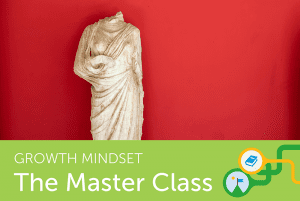
It’s easy to get overly conclusive when talking about growth mindset, or the belief that abilities can be improved over time. We may say, “Oh, I totally have a fixed mindset,” or “After all these years, I finally have a growth mindset.” But the truth is, that’s inherently a fixed-mindset way of viewing the concept, since it presumes that the mindset itself is set in stone. In reality, people don’t have a fixed or growth mindset; rather, they use a combination of the two depending on the situation. The NeuroLeadership Institute has caught this subtle difference many times over during various industry research projects, most recently culminating in our white paper “Impact Report: Growth Mindset Supports Organizations Through Disruption.” The paper features five case studies from companies making growth mindset come to life and driving lasting change. This variety made it clear that fixed and growth mindsets weren’t “switches” that people turned on or off. They were more like dimmers, capable of being dialed up or down depending on the context. How to actually think about growth mindset Think about your own life. Let’s say you like to cook and sing; maybe you’re learning a foreign language, too. At work you’ve just been promoted and now you oversee a larger team than you did in your previous role. It’s quite possible —probable, even — that you approach each of these domains with a different mindset about your abilities. Perhaps you relish the chance to try new recipes in the kitchen, and add more French to your vocabulary — classic growth mindset. At the same time, you feel like your singing chops aren’t good enough and leadership skills have hit a ceiling, each possibly indicating a fixed mindset. All those scenarios make it impossible to fairly say you have a fixed or growth mindset, because you’re using both all the time. NLI’s research over the past several months made it clear that leaders should go easy on themselves when developing a growth mindset, since the skill itself is something new to nurture. The key is to recognize when thoughts become self-limiting, and then actively work to move toward growth. If leaders can make this mental shift, past research suggests, they’ll be better at instilling growth mindset in their direct reports. In time, they can even create what NLI calls a Growth Mindset Culture — a confluence of growth mindset across an organization, each employee finding more value in getting better as opposed to being the best. This article is the fourth installment in NLI’s series, Growth Mindset: The Master Class, a 12-week campaign to help leaders see how the world’s largest organizations are putting growth mindset to use. [action hash=”cd97f93c-1daf-4547-8f7c-44b6f2a77b77″]

Management transparency has been shown to boost employee engagement, performance, and creativity. But how does transparency drive employee experience?

Change is the only constant, the old adage goes, which might explain why today’s organizations are so focused on adaptation. After spending several months interviewing 20 global organizations about growth mindset, the NeuroLeadership Institute has identified six business reasons an org might look to put the concept to use, which we’ve summarized below. (Note: Percentages may not add up to 100% due to rounding.) [action hash=”7b17478f-7c52-499f-9fd4-7a4d4b69cfa1″] 1. Digital transformation (38% of sample) The most popular reason an org might focus on growth mindset was to stay agile in the face of technological uncertainty. Big data and artificial intelligence are rapidly becoming commonplace, and organizations of all kinds — mid-tier companies and corporations alike — are looking to keep talent ready to change on a dime. 2. Business improvement (19% of sample) Some organizations used growth mindset to introduce leaner methodologies into their work streams, restructure teams, or implement new business strategies. These orgs wanted to be more agile, too, but focused more on improving internal operations than adapting to market forces. 3. Growing up (13% of sample) Growth mindset meant just that to some organizations: growth. Maturity stood out as a major reason for organizations that were smaller and looking to expand quickly and sustainably. Financial pressures, internal turmoil, and other setbacks often accompanied these efforts. 4. Reinvention (13% of sample) Organizations focused more on pivoting in some form used growth mindset to change their culture, rebound from financial troubles, and shift gears after a shakeup in leadership. Among these organizations, especially, growth mindset represented a way to see challenges as opportunities, not threats. 5. Performance management transformation (13% of sample) For some organizations, growth mindset was instrumental in overhauling the way they interviewed and hired candidates, and evaluated employees. Instead of asking employees to prove their worth, orgs can use growth mindset to see the value in improvement over time. 6. Quality enhancement (6% of sample) The university in our sample was the lone organization to use growth mindset for accreditation. It saw the concept as the means to enhance the quality of its program for the benefit of current and future students. Parting shots Why one organization might embrace digital transformation over reinvention is a product of the industry and size of each enterprise. A major takeaway from our research is that organizations mold growth-mindset efforts to fit their needs. What works for one might not always work for all, so look for the process in your org that may need growth mindset the most. This article is the third installment in NLI’s new series, Growth Mindset: The Master Class, a 12-week campaign to help leaders see how the world’s largest organizations are putting growth mindset to use. [action hash=”7b17478f-7c52-499f-9fd4-7a4d4b69cfa1″]

In-depth interviews with organizations about growth mindset revealed a fascinating collection of goals, use cases, obstacles, and outcomes.

When Peter Mende-Siedlecki was visiting a loved one in the hospital recently, he noticed something strange by the person’s bed. It was a set of statements, designed to remind the hospital staff of three things. “Please call me _____.” “What I would like you to know about me is _____.” “What I value/love most is _____.” For Mende-Siedlecki, a psychologist at the University of Delaware who’s spent a career studying empathy and spoke at this year’s NeuroLeadership Summit, this was a fantastic discovery. In just three prompts, the hospital engaged in expert individuation, or the psychological practice of seeing people as unique, distinct beings. We can think of it as the opposite of stereotyping. In the workplace, individuation matters because empathy matters. Every day, teams collaborate based on overlapping strengths and weaknesses, constantly keeping others in mind. We sense people’s needs, they sense ours, and everyone adjusts accordingly. The trouble is, science has repeatedly shown that empathy is a scarce resource; our brains don’t want to spend it willy-nilly. This leads to unfortunate observations like “One death is a tragedy, but a million deaths is a statistic,” and the all-too-human habit of “compassion collapse” in the face of mass tragedy, where the brain apparently has an easier time caring about one than many. Individuation, Mende-Siedlecki’s research has found, works as a kind of shortcut to empathy. If we can remember that the people around us feel pain, stress, joy, and all the other things we too feel, maybe we can escape some of the habits that hold us back. Teams don’t necessarily need to mimic the hospital’s prompts to reap the benefits of individuation. Instead, they can model themselves after the behaviors of society’s master networkers — namely, asking one another about aspects of their personal lives, such as where they’re from, who their family is, and how they stay busy, just to name a few. The practice also helps build what Stanford University psychologist Leor Hackel calls “reciprocity.” Hackel, also a speaker at this year’s NeuroLeadership Summit, has found in his research that “paying it forward” through charitable actions or words, builds compassion in people. Creating empathic teams is valuable for leaders because NLI’s own research has found that collective intelligence — even of the emotional kind — is critical for team function. It’s not enough to have a star player, in other words. The best teams are smarter, more creative, and generally higher-functioning because the whole is greater the sum of its parts. It’s an ironic, humanistic takeaway: The more you help employees see each other as individuals, the stronger your entire team will be.

One of the most well-established psychological concepts, growth mindset, has exploded among leadership. But how do you cultivate growth mindset culture?

Organizations often justify a toxic environment and masculinity contest culture with the mentality of “how we do business here.”

It’s tempting to blame toxic work cultures on an unknowable set of factors, but often the answer is much simpler. In an article for Fast Company, author Meghan E. Butler, partner at Frame+Function, noted that toxic workplace cultures are consistently the product of poor leadership. Specifically, toxic behavior often stems from leaders missing (or ignoring) key warning signs in how teams function. Perhaps they see aggressive work styles as signs of passion, or label cases of bullying as harmless fun. Meanwhile, employees get hurt and the culture turns toxic. Understanding SCARF As Butler points out, there are five key social domains that demand leaders’ attention: status, certainty, autonomy, relatedness, and fairness. We call it the SCARF Model. It relies on the widespread neuroscience finding that social threats register in the brain in a similar way as physical threats: Cognitive function suffers and people’s quality of work declines. Toxic behavior can affect any SCARF domain, or several in combination. For instance, it’s threatening to a person’s status when their co-worker openly calls out a recent mistake in a team meeting. And it damages people’s sense of fairness and relatedness (or sense of belonging) when a manager plays favorites by assigning projects only to certain people. Leaders who stay aware of these domains can actively take steps to fix them, in turn creating more psychological safety at work. That means bestowing employees not with social threats, but rewards. Here are examples for each SCARF domain: Status — Leaders can celebrate employees’ contributions to the wider team, and they can celebrate team wins to the larger department or organization. Certainty — Before starting a meeting, leaders can lay out the agenda and clarify the goals he or she wishes to achieve by the end. Autonomy — Leaders can raise employees’ sense of control and ownership over their work by delegating projects across the team, rather than hoarding information and keeping people out of the loop. Relatedness — Inclusive leaders help their employees recognize shared goals, such as hitting sales targets or wrapping a big project. (Contrary to popular belief, highlighting differences may only further divide people.) Fairness — Leaders can create a sense of equality by mitigating biases, such as seeking diverse opinions around the office to reduce what psychologists call “experience bias.” The takeaway Ultimately, toxic cultures form when leaders practice the same unhelpful behaviors over and over again. These actions are seldom intentionally destructive, but unless leaders actively try to develop the correct habits — and create psychological safety for everyone — social threats are bound to arise. As Butler notes, “All of these signs can generally be whittled down to one key factor: Fear. And fear corrodes mental health and productivity.”
Jay Van Bavel is a social neuroscientist who studies unconscious bias, group identity, and cooperation, specializing in understanding the neural mechanisms by which a sense of belonging to a group influence our thoughts and behavior. His most recent study found that increasing a group’s sense of common identity leads to greater cooperation, coordination, and collective intelligence — all topics he will be discussing at the upcoming NeuroLeadership Summit. We reached him at his lab at New York University, where he is Associate Professor of Psychology and Neural Science and an affiliate at the Stern School of Business. He is also editor-in-chief of the NeuroLeadership Journal and serves as one of our senior scientists. NLI: What are you working on that’s most exciting to you right now? Jay Van Bavel: I’m working on how to understand group coordination and cooperation. We’ve found that when you build a sense of common identity in a group, that leads to greater cooperation, and people are willing to sacrifice more to make the group succeed. They’re also more collectively intelligent. NLI: Can you define collective intelligence? JVB: Groups that perform better than the sum of their parts are considered collectively intelligent. Great groups outperform groups that might have a smarter person or a higher average intelligence. They’re really good at problem-solving tasks and creativity tasks. What’s going is that they’re communicating very well, making sure everybody’s insights are considered. This allows them to brainstorm and come up with different ways to solve the problem. NLI: Can you tell me how group identity fits into your recent study? JVB: We measured group identity and found that groups with the most pride and common connection to their team perform best at cooperation games. In one condition, we tell people they’re all competing against each other and the best individual is going to win. When we do that, they don’t work well together. Their performance isn’t very good. But when we tell people they’re working as a team to compete with other teams, it’s in that condition that they work best with the group they’re with and cooperate the most. Those teams end up having the best problem-solving. NLI: You’ve designed these tasks where cooperating increases the team’s performance as a whole. Is that the kind of task that best reflects what people typically have to do in organizations in the real world? Are business tasks generally tasks where a group cooperating is does better than individuals working independently and solo? JVB: Yes. In science, the best papers are driven by teams of great people working together. Even though we have this notion of Einstein, that’s not how science works. The most impactful science is done by teams, not by a single genius. In Hollywood, Pixar is famous for having these incredible creative teams that go off and do their bits and then come back and share knowledge and give each other critical feedback. Some tasks, like sales, are individualistic — you have people out in the field knocking on doors or making calls one-on-one. NLI: Yes! And salespeople need support, too. JVB: Most work nowadays — especially really complex high-impact work or creative work — is done in groups or teams. NLI: What can organizations do to increase cooperation in their teams? JVB: There’s a couple of things. One, they need to build a common sense of identity on teams that are working together. What we’ve found is that (A) you can measure it, so you can see which teams already have that kind of identity. And (B), you can manipulate it — managers and leaders can be empowered to create that sense of identity. Research has found that diverse teams benefit the most from having a group identity, because it helps them get on the same page and put aside their differences. Then they can use their different insights to solve a problem together, without the conflict that normally would come from that — and without breaking into a bunch of individuals. NLI: How can organizations create a culture of cooperation? JVB: Cooperation is hard. It takes a lot of prefrontal cortex activity to overcome your impulse to be selfish and instead engage in cooperation. We found that people who have damaged their prefrontal cortex can’t do it. That same logic probably also applies if you’re distracted — it might make cooperation hard. But if you’re working with a group of cooperative people — if you’re in a cooperative team or an organization with a cooperative culture — all of a sudden cooperation becomes easy. It no longer requires your lateral prefrontal cortex, your working memory, or executive function — and it seems to feel good. Once you turn the corner and create a culture of cooperation, people get a reward signal when they make decisions to cooperate, so it becomes easier. It doesn’t require as much self-control and regulation, and they can do it without thinking. We’ve looked at data from around the world from thousands of people, and we’ve found that in places where cooperation is common, people do it automatically. Whereas if they’re coming from places where cooperation is not common, like Manhattan, then it’s hard for them, and it takes them longer to come to the decision to cooperate. NLI: What are people responding to exactly? Is it the norms of the group they’re in? JVB: Yup, exactly. Norms. Of course, some people pick up on norms and other people don’t. This really only applies to people who are paying attention to the norms around them. When the norms are good, they cooperate. NLI: So how can an organization create a norm of cooperation? JVB: Several things. First, they can hire cooperators. Hire people who are cooperative and don’t hire people with sharp elbows. Second, promote and reward people — especially in public ways — who show that they value cooperation and collaboration. Third, leadership can send signals by being role models. If you put people in a group with somebody

Feedback is essential for organizational (and organismal) growth, but what’s the best way to give it? Typical feedback conversations are painful and extremely stress-producing. Managers who try to avoid offending their employees risk over-correcting, giving feedback that is polite, but ultimately unhelpful. Billions are spent each year in an attempt to solve these feedback problems. A recent feature story in strategy+business could hold the key insight: Asking for feedback, rather than giving it unprompted, may be the smartest way to develop a growth-oriented culture. “We’re not promising it’s going to feel good right away, but it will be better for you in the long term,” says NYU psychologist and NLI senior scientist Tessa West. Putting the brain in the right state West and her colleague Katherine Thorson, also of NYU, recently ran a study at a major consultancy that tracked people’s heart rates during mock negotiations. Afterwards, each participant took turns giving and receiving feedback. Certain groups were instructed to ask for feedback, while others gave it unprompted. The findings showed giving feedback was just as anxiety-producing as receiving feedback. However, when people received feedback that wasn’t asked for, their heart rates jumped around erratically. (Equivalent spikes have been found during some of the most stressful events, such as public speaking.) Our brains suffer in these moments of duress. Stress causes a decline in cognitive function and a narrowing of the senses, limiting our ability to think critically or learn. To serve their crucial function of helping employees improve and grow, feedback conversations should avoid this threat response. Based on her recent study, West believes asking for feedback could hold the power to make discussions less painful. When people know to ask for feedback, they feel in control, West says. They feel psychological rewards of autonomy and certainty. They can steer the conversation wherever they choose and feel confident about which topics will get discussed. Givers also feel more certainty, because they no longer have to guess what kind of information will be most useful. Creating the habit of asking To make an asker-led culture a reality, West says to start small. “It’s like going on a diet,” she says. “You don’t want to cut out everything that’s delicious. You have to gradually replace the unhealthy with the healthy.” Leaders can take the first steps by asking for feedback themselves — perhaps about the temperature in the last meeting. Gradually, West says, people will feel safer asking for feedback if they know the resulting discussion will be productive, not threatening. Over time, organizations that take up the strategy should expect to have regular feedback conversations more often, which means avoiding errors earlier and innovating more rapidly. SEE ALSO: How Microsoft Transformed Its Approach to Feedback
Microsoft turned to the NeuroLeadership Institute to enlist our help in designing a new approach to feedback — one grounded in the neuroscience.

If leaders want to make the best decisions possible, it’s critical for their employees to feel confident about voicing opinions that challenge the status quo — or at least what the highest-status person in the room thinks. But speaking up is hard, especially within cultures that don’t explicitly ask for others’ input. If leaders want to avoid biased decision-making, they must gather a range of opinions, not just rely on their own. That means they must wrestle with an important question: How do we get more people speaking up? Aviation and medicine may hold the answer. The almighty ‘two-challenge rule’ Mona Weiss, a University of Leipzig psychologist, has studied the practices of airline pilots and nurses to understand how teams in life-or-death situations avoid disaster. Her big insight: Successful teams implement systems that provide clear if-then plans. These if-then plans in turn help lower-status team members save the day. In both aviation and medicine, teams widely rely on something called the two-challenge rule. It’s a system developed by the U.S. Army to empower crew members to take action if their partner is unable to perform his or her duties. For instance, if a co-pilot notices his captain is confused or overwhelmed mid-flight, the co-pilot can issue a challenge — say, to adjust the altitude or position of the aircraft. If he gets no response, he can ask again. If he still gets no response, the co-pilot is permitted to assume control of the aircraft, potentially saving the lives of everyone onboard. Medicine has since adopted the two-challenge rule, and Weiss’ research has shown it radically boosts team performance. Nurses better prevent surgeons from making fatal errors and more lives get saved. High-status people make mistakes, too Organizations should have their own version of the two-challenge rule, Weiss claims. At the start of meetings, leaders should occasionally remind everyone that speaking up is a sign of status — not a strike against them — because it shows an interest in the team’s shared goals. Ideally, this knowledge will empower people to speak up if others misstep, for instance by using poor reasoning or citing flawed data. People who struggle to find their voice can remind themselves If I hear something that needs correcting, then it’s my duty speak up. The simple if-then plan works because it lets people address the idea at hand without feeling like they are attacking the person responsible for that idea. Indeed, leaders don’t need to stick to the two-challenge rule exactly to help their teams make better decisions. But they do need to think in terms of systems, so lower-status people can have a protocol for pointing out blind spots — and avoiding the crash. SEE ALSO: Microsoft GM of Worldwide Learning Says Neuroscience Is the Future in Companies

Bias isn’t just something that happens within a person. It also happens between people — namely, in meetings. Without meaning to, people at the head of the table routinely make mental shortcuts that save time, but also may impair decision-making. This expedience may feel good, but teams and organizations may ultimately suffer from the scarcity of input. The key to holding less biased meetings is diversity, a premise we explored in a recent Corporate Membership article called “How Diversity Defeats Groupthink.” The piece uses tested research to show how more diverse teams can cut through bias and improve decision-making. We’ve posted an excerpt below, featuring five strategies to help leaders change their behavior and incorporate greater diversity of thought. 1. Bite your tongue when you’re in charge As a leader, you naturally want to share what you know. But it’s important not to bias the discussion with the influence you wield. Next time you find yourself wanting to broadcast your opinion at the outset, remember to hold back until others have weighed in. 2. Solicit contrary perspectives People naturally want to get along, but that can make dissent feel unwelcome. Next time you sense team members hesitating to speak their minds, remind them it’s OK to disagree. The goal isn’t harmony, but good decisions. But you need to rotate the role of contrarian, so that it becomes a habit that people can employ. 3. Amplify quiet voices Bad decisions happen when team members keep their doubts and reservations to themselves. Next time you notice a discussion being dominated by a few vocal personalities, make a point of calling on those whose voices haven’t been heard. 4. Run the scenarios One way to defeat conformity is to change your time horizon. Next time your team’s plans start feeling too rosy, try projecting yourself into the future, running through scenarios and thinking through what could go wrong. Shifting your perspective can inject an important dose of reality and help you see through misplaced optimism. 5. Switch it up The more time you spend as a team, the closer you get. This camaraderie can be fruitful, as team members begin to share the same language and behaviors. But, dangerously, they can also think like each other. Next time that happens, make a point to shake things up. Swap in new people on the team, and shuffle roles. Change can be bittersweet, but it will help keep your team nimble and sharp. SEE ALSO: The Smartest Teams Embrace the ‘Diversity Paradox’

As the world continues to evolve, and as business, economic, and social influences emerge, the NeuroLeadership Institute is always revisiting the emerging research and our internal frameworks to make sure we’re as relevant as possible. Since so much is going on in leadership, culture — and is now becoming clear, power — we felt a responsibility to revisit the way we describe our leadership practice not only to the world, but to ourselves. Going from Leadership and Change to Culture and Leadership may seem superficial at first glance, but in my twenty-plus years of human capital experience, I have realized that words matter. We say to our clients all the time: think essential, not exhaustive. For us to focus our energies, research, and discussion internally and with clients, it wasn’t just change we were interested in impacting, but culture. So what is culture? For one thing, it’s not a mystery. In the management world, culture is often spoken of with hushed tones, as some mercurial substance, ever-changing and impossible to be harnessed. But in fact, if you look into the brain science, it’s radically simple. Culture is shared everyday habits. They are shared in that they operate between people. They’re normative: they’re common across many people. It’s not reserved for the top echelon of the house, but the sum total of how everyone in the system behaves. They’re everyday, because frequency matters. It’s the consistency and the reinforcement that we provide one another that tells us what the norms are. And they replicate from person to person over time, like genetic code. The fundamentals need to be so integrated that you don’t even need to think about them. When you’re under pressure, your precious energy at work isn’t diverted to what you ought to do, but the expected behaviors are already baked in. You can apply your energy to more urgent issues and unique, in the moment problems. Habits are the stuff of muscle memory, enabling the automatic response. And the way you do it is with frequency, practice, and focus. Habits are contagious. They radiate out from leaders, who set the norms in their teams and across the organization. Decades of social and brain science research has shown that people defer to status, hierarchy, and power in conscious and nonconscious ways. That means that shifting leadership behavior is a lever for shifting culture, the center of the nesting doll of organizational habits. Understanding what your priorities, habits, and systems are allow you to take ownership of your culture. To that end, we have a host of research, insights, and products coming this year about culture. We have upcoming webinars on the science of smarter teams, the means to editing organizational DNA, and rethinking the 9-box. We are launching DIFFERENTIATE, for taking bias out of performance reviews, and DEVELOP, for better long-term career conversations. Culture is an ongoing process. We’re excited for you to join us. Continue reading on LinkedIn… SEE ALSO: The Biggest Myth About Growth Mindset

As the world continues to evolve, and as business, economic, and social influences emerge, the NeuroLeadership Institute is always revisiting the emerging research and our internal frameworks to make sure we’re as relevant as possible. Since so much is going on in leadership, culture — and is now becoming clear, power — we felt a responsibility to revisit the way we describe our leadership practice not only to the world, but to ourselves. Going from Leadership and Change to Culture and Leadership may seem superficial at first glance, but in my twenty-plus years of human capital experience, I have realized that words matter. We say to our clients all the time: think essential, not exhaustive. For us to focus our energies, research, and discussion internally and with clients, it wasn’t just change we were interested in impacting, but culture. So what is culture? For one thing, it’s not a mystery. In the management world, culture is often spoken of with hushed tones, as some mercurial substance, ever-changing and impossible to be harnessed. But in fact, if you look into the brain science, it’s radically simple. Culture is shared everyday habits. They are shared in that they operate between people. They’re normative: they’re common across many people. It’s not reserved for the top echelon of the house, but the sum total of how everyone in the system behaves. They’re everyday, because frequency matters. It’s the consistency and the reinforcement that we provide one another that tells us what the norms are. And they replicate from person to person over time, like genetic code. The fundamentals need to be so integrated that you don’t even need to think about them. When you’re under pressure, your precious energy at work isn’t diverted to what you ought to do, but the expected behaviors are already baked in. You can apply your energy to more urgent issues and unique, in the moment problems. Habits are the stuff of muscle memory, enabling the automatic response. And the way you do it is with frequency, practice, and focus. Habits are contagious. They radiate out from leaders, who set the norms in their teams and across the organization. Decades of social and brain science research has shown that people defer to status, hierarchy, and power in conscious and nonconscious ways. That means that shifting leadership behavior is a lever for shifting culture, the center of the nesting doll of organizational habits. Understanding what your priorities, habits, and systems are allow you to take ownership of your culture. To that end, we have a host of research, insights, and products coming this year about culture. We have upcoming webinars on the science of smarter teams, the means to editing organizational DNA, and rethinking the 9-box. We are launching DIFFERENTIATE, for taking bias out of performance reviews, and DEVELOP, for better long-term career conversations. Culture is an ongoing process. We’re excited for you to join us. Continue reading on LinkedIn… SEE ALSO: The Biggest Myth About Growth Mindset
Join millions of employees in creating culture change at scale by reaching out today.

In 2007, David and Lisa Rock and their team had been working in leadership development and executive coaching for ten years, when David coined the term “NeuroLeadership.”ef

North America
Africa
South America
Asia
Europe
Australia
© NeuroLeadership Institute 2025. All Rights Reserved
This site uses cookies to provide you with a personalized browsing experience. By using this site you agree to our use of cookies as explained in our Privacy Policy. Please read our Privacy Policy for more information.